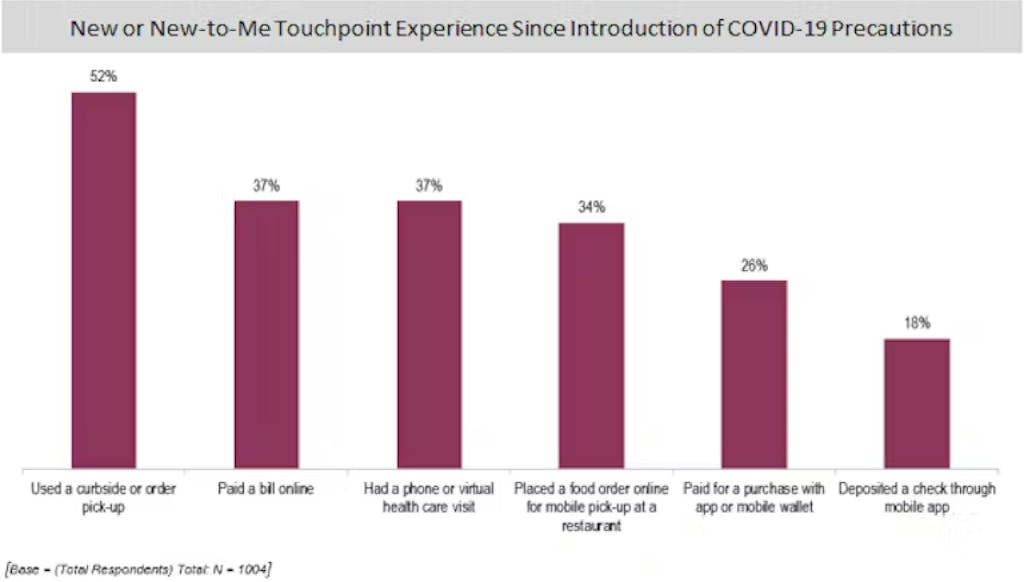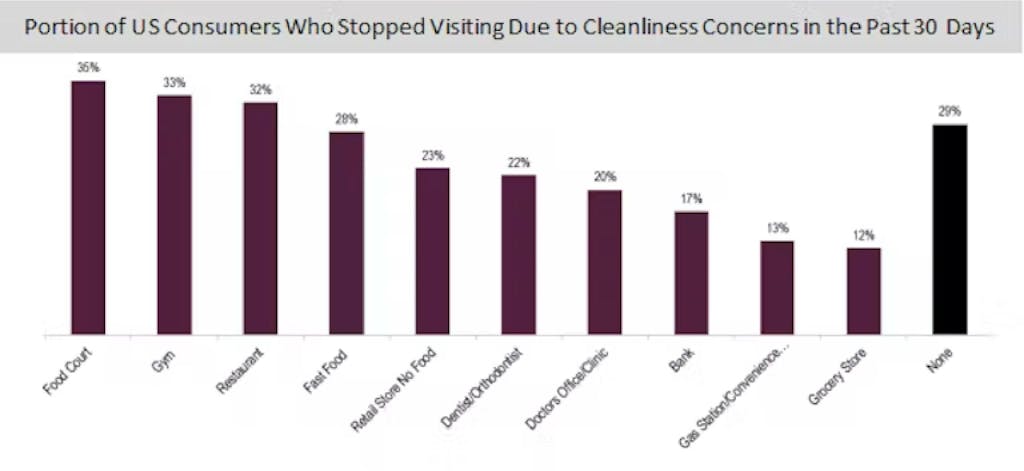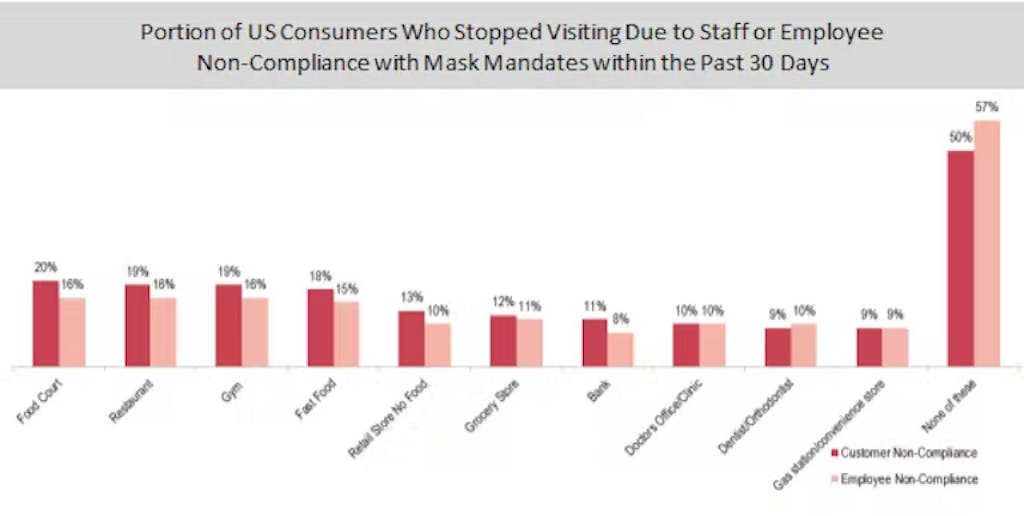How are they Impacting your Customers’ Experience?
Efforts to thwart the spread of COVID-19 have introduced new and creative ways to keep customers and employees safe by limiting interaction. Nearly half of US consumers (48%) agree that precautions resulting from COVID-19 preventions have introduced new and more convenient ways to buy goods and services they need. For example, if you are in the market for a new home, you can schedule a virtual showing. Need a new car, truck or SUV? No problem, you can take a virtual test drive.
If you cannot imagine buying a home that you have never stepped foot in or buying a car that you have not physically driven, you are not alone. Most US consumers have not engaged in virtual shopping for these big ticket/high commitment items. Yet, a recent Big Village CARAVAN survey uncovered a small portion (4%) of US consumers who have made such purchases based only on virtual interactions with their future home or vehicle since COVID-19 precautions began.
While virtual home or car buying may be a bit futuristic for your personal shopping preference, these are not the only modifications to current shopping introduced based on COVID precautions. Many of these experiences or ways to shop are not new but may be new to you. Most commonly, US consumers have embraced:
- Curb side or drive-up order pick-up services for retail and food/restaurant purchases,
- Incorporated technology into their personal or family health care with phone and virtual visits and/or
- Navigated new payment methods using online bill pay, smart phone apps, or their mobile wallet.

While the greatest adoption of new-to-me touchpoints are found within the healthcare, financial services and retail industries, all industries are impacted by COVID precautions. To maintain a strong customer experience, every organization should review their customer journey from contemplation to purchase with an eye to intended and unintended additional touchpoints. Specifically, brands/organizations should be or begin assessing customer perceptions regarding store cleanliness, employee and customer compliance with mask and social distancing policies, and ways to help customers feel safe during their entire shopping process. This revised view will allow brands to incorporate new, convenient, and safe interventions used to deliver goods and services, but also understand their performance relative to existing new or new-to-me touchpoints.
To maintain high levels of customer satisfaction and loyalty, brands must be aware of the impact these new or new-to-me touchpoints have on their customers’ overall experience. For example, my mother-in-law recently celebrated a milestone birthday. We have a small family and live in an area where it is considered safe to gather in smaller numbers.
When we considered how to celebrate, we first planned to meet at her favorite restaurant. However, we learned that the restaurant would not be able to take a reservation for 11 unless we wanted to sit at two separate tables. Understanding guidelines and restaurants’ need to comply to remain open, we opted to order online with curb side pick-up and eat together at home.
Since we were going with curbside pick-up, we were not limited to one restaurant’s menu for the meal. This was a happy occurrence for the younger family members who opted for fast food. To minimize the amount of time it would take to retrieve the kid portion of dinner, my husband used a mobile app to order ahead from their restaurant of choice. We used the app in hopes of avoiding the typically long, slow-moving drive thru line at this popular chain.
The app worked very well. It was easy to input our meal selections and pay. At the end of the order process, the app instructed to wait to hit submit until we were approximately five-minutes away. After the submit button was pressed, we would receive a text message when our order was ready.
All seemed to be going wonderfully with this presumably convenient work-around. In our minds, we had found a clever convenient work around to the long, slow-moving drive thru lane and be on our way to the party. We arrived and found that was not the case. Without additional instruction within the app, we assumed that we would enter the lobby of the fast food establishment and pick-up our order as we had done with other similar restaurants. Our assumption was not correct. The lobby doors were locked, there were no signs directing us to a convenient way to retrieve our order or a mobile order lane in the drive thru. With no other option, we entered the drive thru line like a regular customer would. When it was finally our turn, we mentioned the pick-up order and were told just to bypass window #1 and go straight to window #2.
The process was not only disappointingly inconvenient, it took longer to get our food than it would have had we just ordered when we arrived at the drive thru.
So how could the fast food restaurant have improved our journey from online order to pick-up?
- Test the end-to-end user experience from mobile app order to physical location pick-up.
- Anticipate the motivation or reasons behind the customer’s desire to order through the app and match the motivation with actual user experience to identify any disconnects or shortcomings.
- Communicate the pick-up process more clearly within the app and at the store location.
- Create a mobile pick-up bypass lane and if not possible, unlock the lobby for pick-up order customers to access their order from a designated shelf.
Had the fast food restaurant tested their new ordering process and associated customer experience touchpoints, they likely would have uncovered these and other potential pain points in the overall process. Adjusting the process to combat potential pitfalls and remediating them in advance would help avoid a negative customer experiences and increase likelihood of future purchases. My family would have had a better chance of experiencing the convenient, satisfying mobile order to pick-up experience the brand undoubtably was trying to achieve with the app.
In addition to new touchpoints throughout the customer journey from order to delivery, brands must also place heightened consideration on cleanliness and compliance with social distancing and protective covering policies in order to retain customers. Big Village explored US consumer perceptions and behaviors associated with safety precautions and found that customers are most likely to avoid restaurants and gyms due to exposure concerns.
These are not the only establishments that may be negatively impacted should they fail to meet client expectations. Specifically, in the past 30 days approximately three-in-ten customers indicated that they have stopped visiting a food court, gym/fitness center, restaurant or fast food location because they are concerned with overall cleanliness. One-in-five US consumers are not visiting retail locations,
healthcare providers (doctor’s office, dentist, orthodontist) or their bank. While cleanliness concerns were less likely to keep customers from visiting gas stations, convenience stores and grocery stores in the past month about one-in-ten US consumers also said that they have stopped visiting a formerly frequented location.

Mask non-compliance has also affected customer willingness to return to a location albeit less so compared to perceptions of an unclean or dirty environment. Approximately one-in-five to one-in-ten customers have stopped visiting locations due to customer or staff non-compliance with mask mandates. Interesting, speaking in statistical terms, there is no difference in avoidance due to staff or customer non-compliance. This is important for merchants to note as they are equally at risk of losing business from the behavior of others within their control (staff) as those who are not (general customers). Having masks available for those customers who show up ill prepared and counseling staff on the appropriate way to wear a mask, will help to retain customers and provide customers with a greater sense of ease.

While nearly half of US consumers believe that recent health related precautions have introduced new and more convenient ways to obtain goods and services, a slight majority (54%), note that these precautions have made it more difficult to acquire the items they need. Furthermore, nearly the same portion (53%) indicate experiencing a sense of anxiety when encountering empty shelves. With so much in flux and out of our control brands need to be vigilant about the things they can control. To retain existing customers and acquire new patrons, successful brands will:
- Maintain high standards of cleanliness
- Enforce employee and patron mask compliance
- Encourage social distancing with signage and monitoring/limiting the number of shoppers
- Identify new or new-to-me touchpoints along their customers’ journey and
- Gather, assess and act on feedback from customers and employees related to new, new-to-me aspects of customer experience
Big Village is here to help your brand deliver exceptional customer experience. In the face of uncertainty, we will help future proof your business by:
- Identifying the new and new-to-me touchpoints along your customers’ unique journey.
- Assess your brand’s performance on all aspects of experience highlighting areas in need of attention/improvement.
- Determine key drivers of overall experience incorporating new and new-to-me touchpoints into the overall analysis.
- Present the changing impact of familiar and new touchpoints on overall customer experience to correctly prioritize resources toward initiatives that have the greatest effect on business outcomes.
Written by Nicole Garberg, VP at Big Village Insights.










